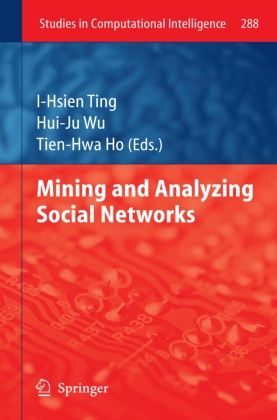
Mining and Analyzing Social Networks
| Verlag | Springer |
| Auflage | 2010 |
| Seiten | 200 |
| Format | 23,5 cm |
| Gewicht | 514 g |
| Artikeltyp | Englisches Buch |
| Reihe | Studies in Computational Intelligence 288 |
| ISBN-10 | 3642134211 |
| EAN | 9783642134210 |
| Bestell-Nr | 64213421A |
Mining social networks has now becoming a very popular research area not only for data mining and web mining but also social network analysis. Data mining is a technique that has the ability to process and analyze large amount of data and by this to discover valuable information from the data. In recent year, due to the growth of social communications and social networking websites, data mining becomes a very important and powerful technique to process and analyze such large amount of data. Thus, this book will focus upon Mining and Analyzing social network. Some chapters in this book are extended from the papers that presented in MSNDS2009 (the First International Workshop on Mining Social Networks for Decision Support) and SNMABA2009 ((The International Workshop on Social Networks Mining and Analysis for Business Applications)). In addition, we also sent invitations to researchers that are famous in this research area to contribute for this book. The chapters of this book are in troduced as follows: In chapter 1-Graph Model for Pattern Recognition in Text, Qin Wu et al. present a novel approach that uses a weighted directed multigraph for text pattern recognition. In the proposed methodology, a weighted directed multigraph model has been set up by using the distances between the keywords as the weights of arcs as well a keyword-frequency distance based algorithm has also been introduced. Case studies are also included in this chapter to show the performance is better than traditional means.
Inhaltsverzeichnis:
Graph Model for Pattern Recognition in Text.- Retrieving Wiki Content Using an Ontology.- Ego-Centric Network Sampling in Viral Marketing Applications.- Integrating SNA and DM Technology into HR Practice and Research: Layoff Prediction Model.- Actor Identification in Implicit Relational Data Sources.- Perception of Online Social Networks.- Ranking Learning Entities on the Web by Integrating Network-Based Features.- Discovering Proximal Social Intelligence for Quality Decision Support.- Discovering User Interests by Document Classification.- Network Analysis of Opto-Electronics Industry Cluster: A Case of Taiwan.
